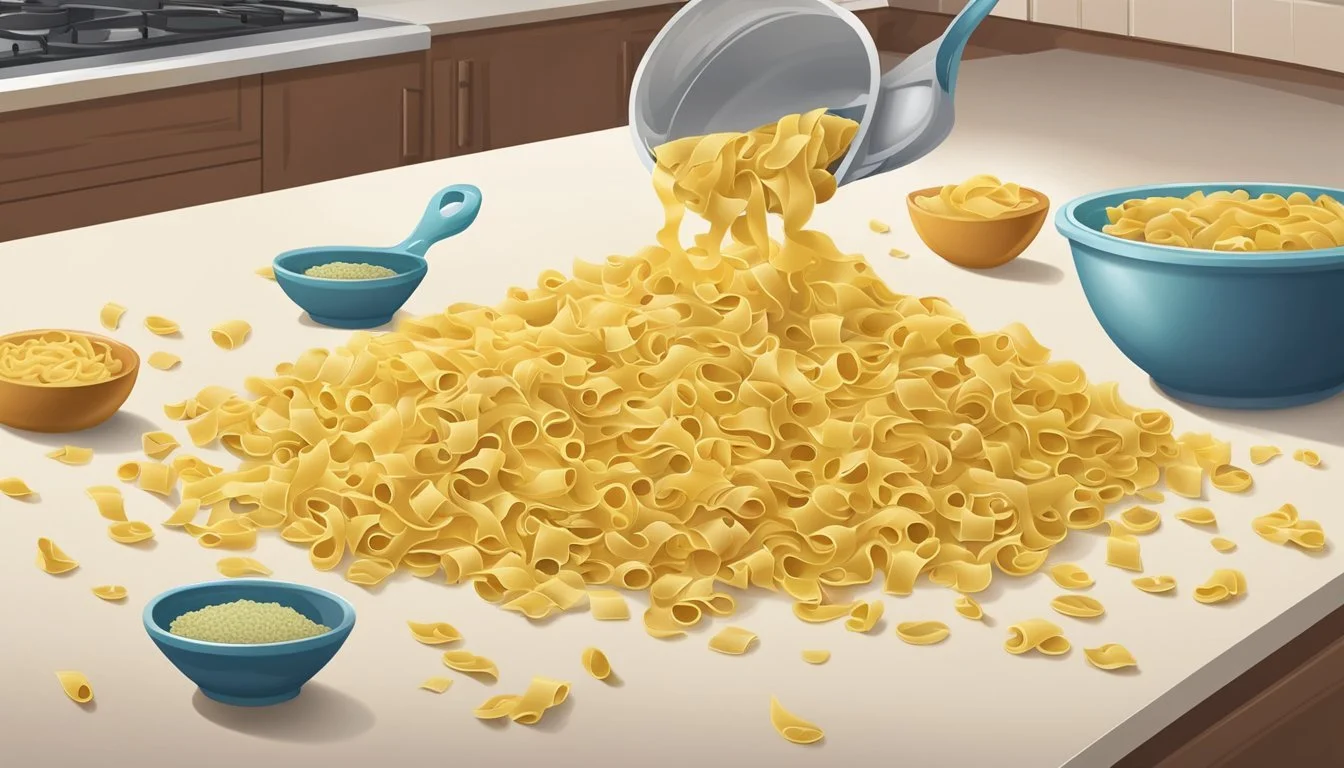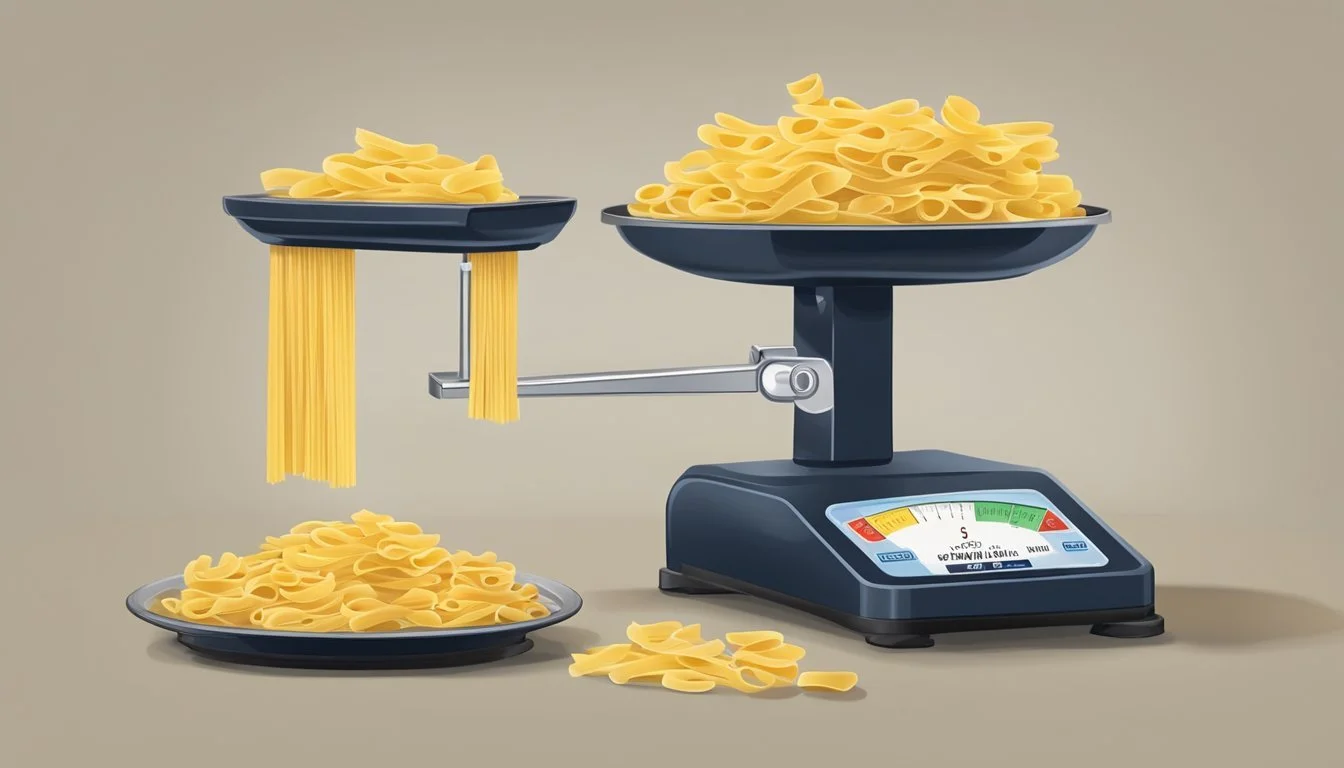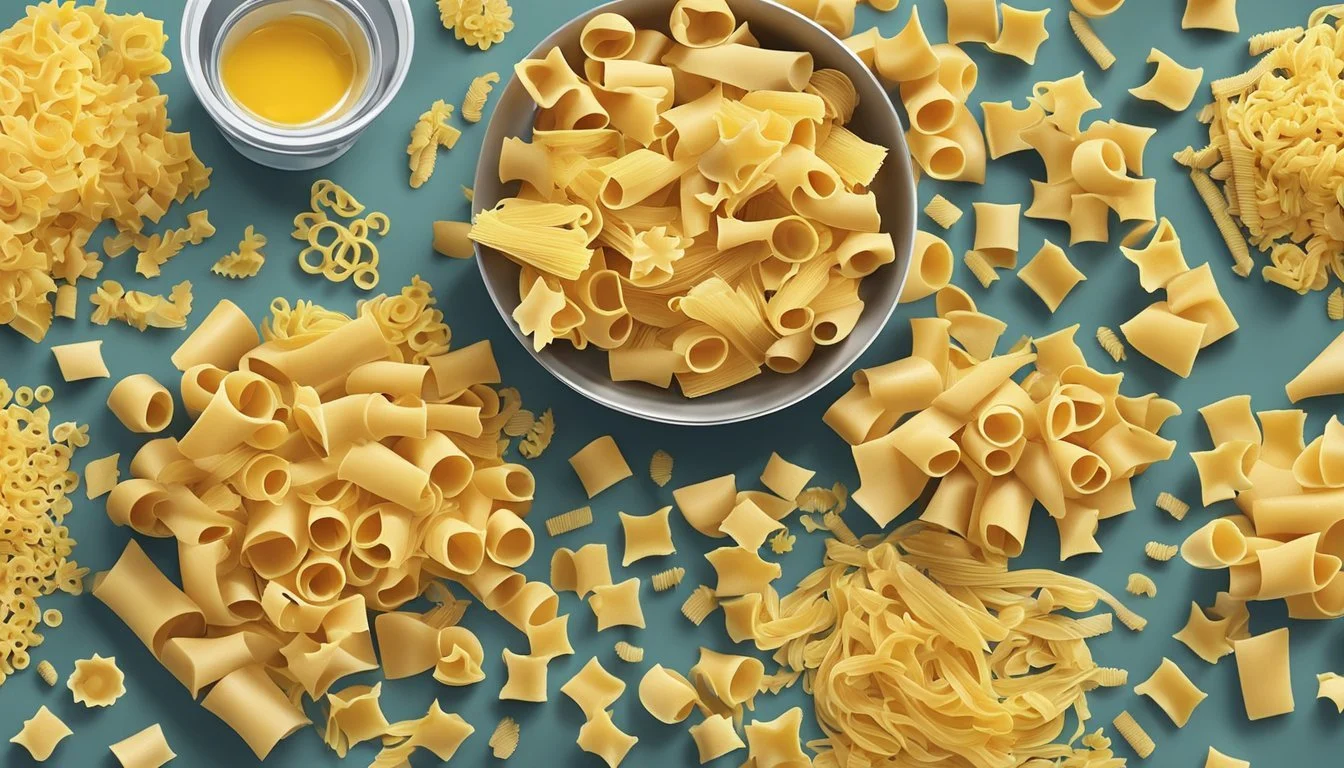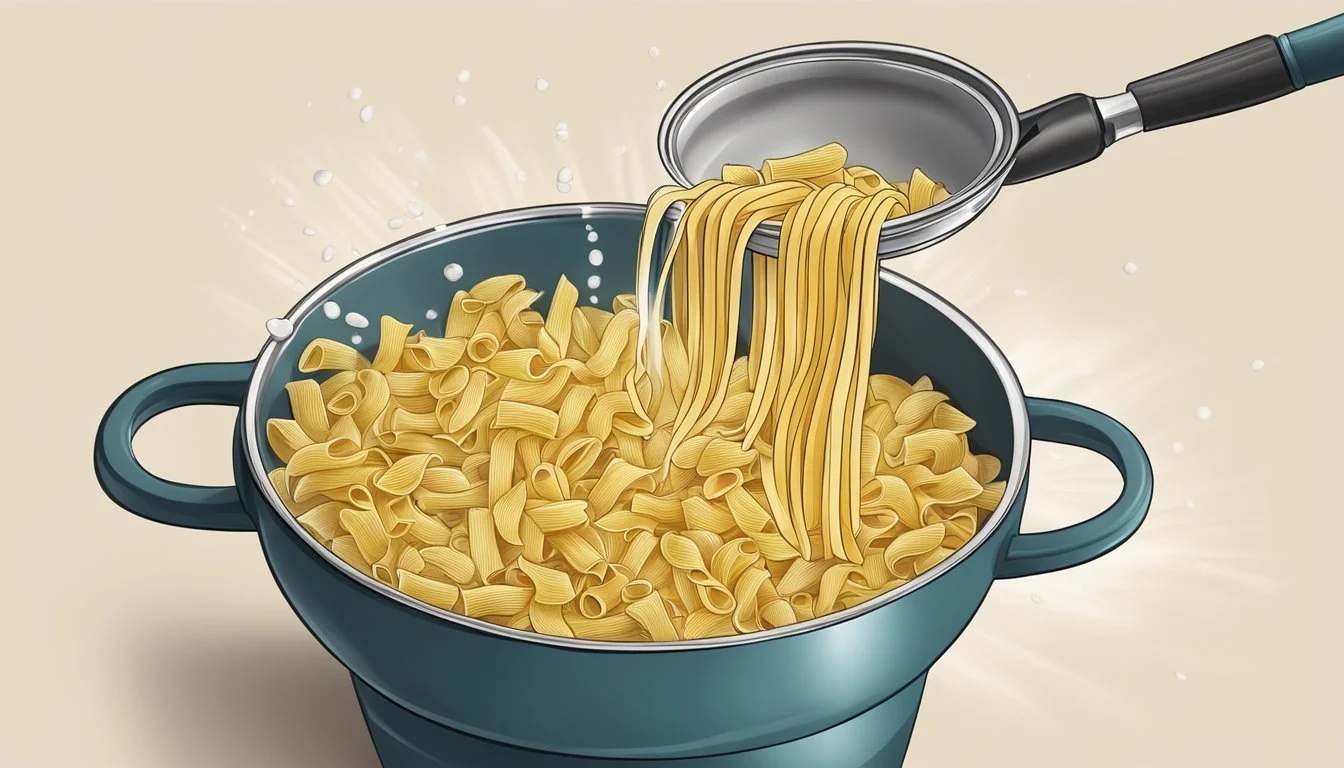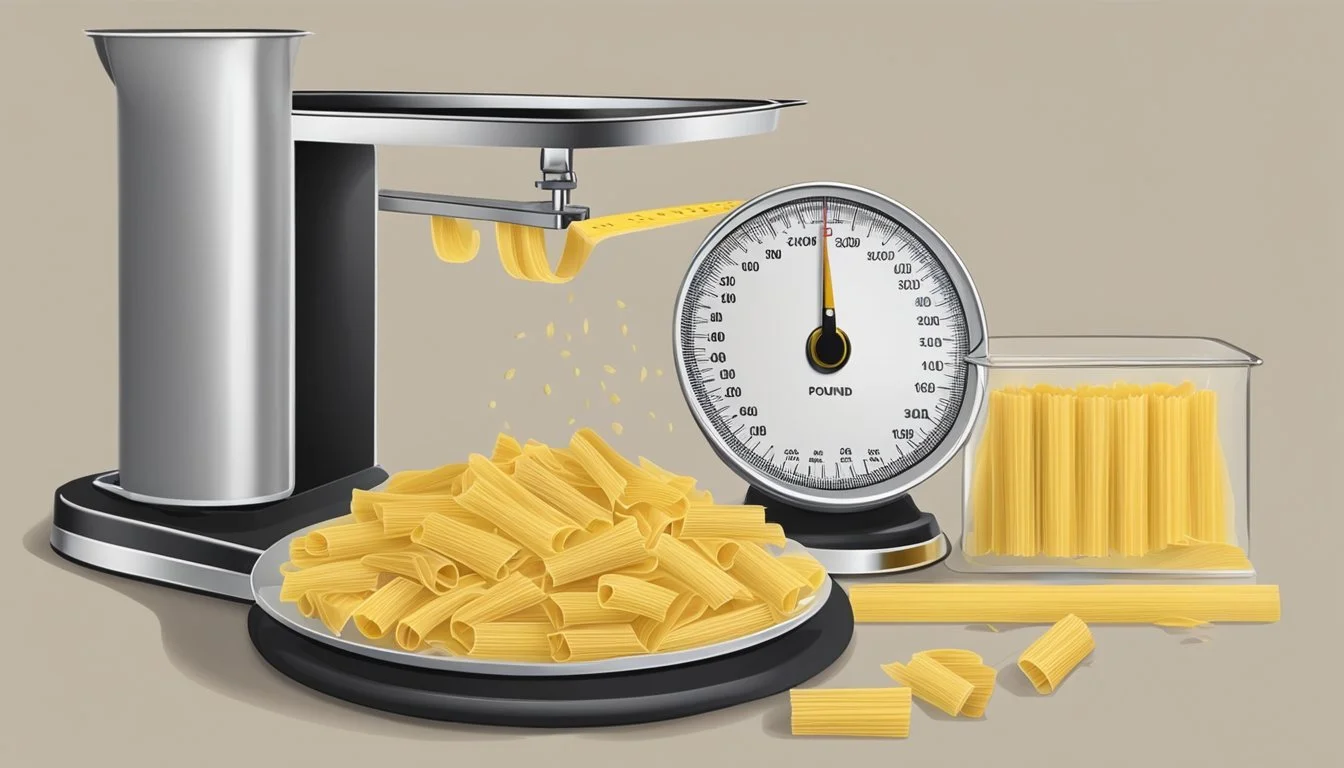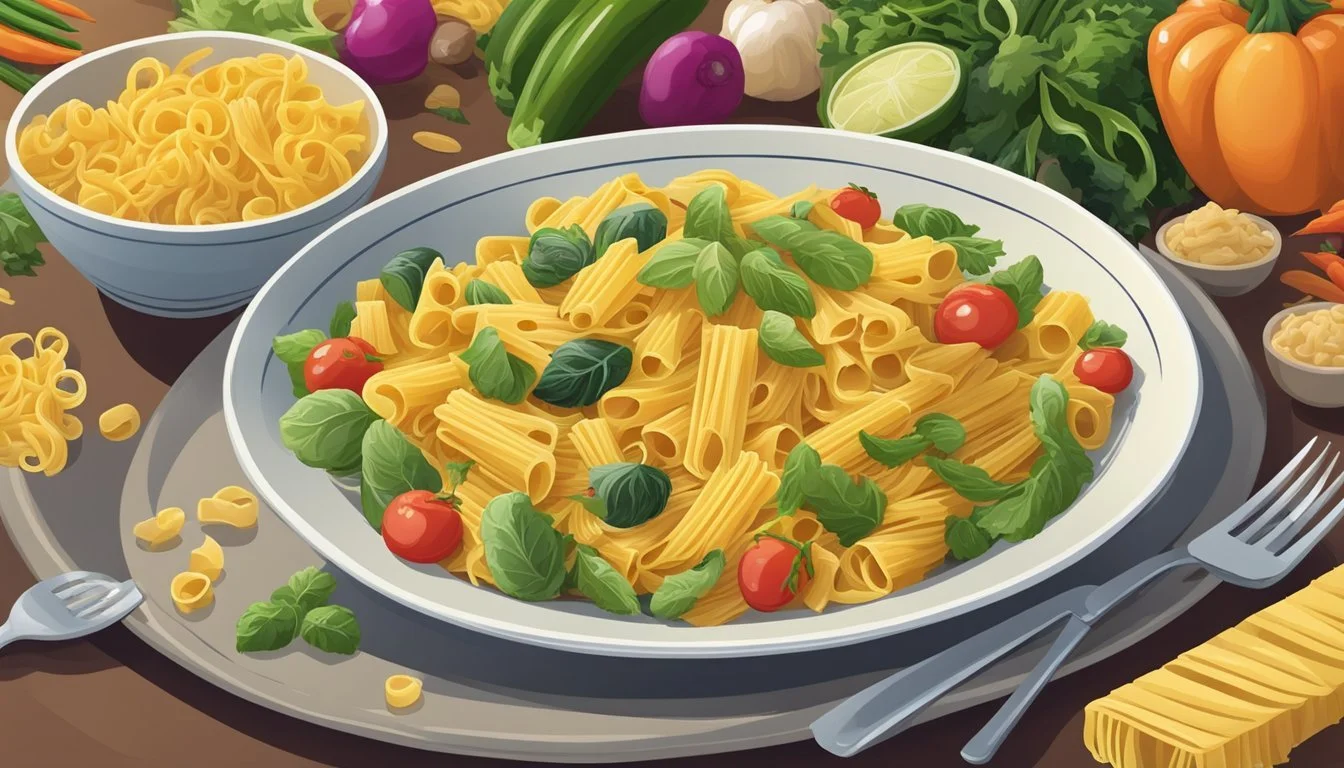How Many Ounces in a Pound of Pasta
Understanding Measurements
When cooking pasta (What wine goes well with pasta?), it is helpful to understand the basic measurement conversions, especially when scaling a recipe up or down. One crucial conversion that cooks often need is the equivalent of ounces to pounds for dry pasta. A pound of pasta contains precisely 16 ounces. This standard measurement applies to all types of dry pasta, whether it's spaghetti, fettuccine, or penne. Being aware of this conversion allows for accurate measurements when preparing meals, ensuring that the dish turns out with the intended balance of ingredients.
Moreover, understanding the correspondence between ounces and pounds assists in shopping for pasta, as packaging often lists the weight in either unit. For those preparing pasta dishes (What wine goes well with pasta dishes?), consistency in measurement leads to reliably delicious results and can make adjustments straightforward when cooking for a larger group or meal prepping for future use. With this knowledge, home cooks can approach pasta recipes with greater confidence and culinary success.
Understanding Pasta Weights and Measures
When cooking or shopping for pasta, it's important to understand how weight and volume correlate, and how to convert these measurements accurately. A solid grasp of this concept ensures proper portioning and helps in recipe adjustments.
Pasta Weight Basics
The weight of pasta is commonly listed in ounces (oz) or pounds (lb), with one pound equating to 16 ounces. This is a standard measurement used in recipes and when purchasing pasta.
Converting Ounces to Pounds for Pasta
To convert ounces of pasta to pounds, divide the number of ounces by 16. For example, 8 ounces of pasta equals 0.5 pounds.
Measuring Dry Pasta
Dry pasta can be measured using a measuring cup or by weight. A typical single serving is about 2 ounces of dry pasta. Pasta shapes and sizes will determine the best measuring method, such as using cups for short pasta or weighing for more accuracy.
Estimating Pasta Portions
For an estimate of portion size, consider that a single serving of pasta is typically around 2 ounces dry, which equates to approximately 1 cup cooked. Portions can vary depending on individual dietary needs and specific recipes.
Dry to Cooked Pasta Weight Conversion
Dry pasta roughly doubles in weight when cooked. A conversion table or calculator can assist in determining the weight change from dry to cooked pasta. On average, dry pasta increases by a factor of 2.25 when cooked.
Using a Pasta Weight Calculator
A pasta weight calculator simplifies the process of converting between units of weight and portions. By inputting either the dry or cooked weight, the calculator can provide the corresponding weight in a different state or unit, streamlining meal preparation.
Pasta Varieties and Shapes
Pasta, a staple food of traditional Italian cuisine, comes in a dizzying array of shapes and sizes, each suited to different dishes and sauces. Understanding these various forms can enhance the culinary experience, ensuring a perfect pairing between the pasta shape and its accompanying sauce or ingredients.
Overview of Pasta Shapes
Pasta shapes are broadly categorized into three groups: long pasta, short shapes, and soup shapes. Long pasta includes familiar varieties like spaghetti and fettuccine, which are optimal for clinging to sauces. Short shapes such as penne and rigatoni often feature ridges or hollows to capture hearty, chunkier sauces. Soup shapes, like orzo and stelline, are tiny enough to be enjoyed in broths and lighter soups.
Choosing the Right Pasta Shape
The choice of pasta shape should complement the consistency of the sauce. Thin, delicate sauces pair well with long pasta, allowing the sauce to coat each strand evenly. Thick, robust sauces are better suited to short shapes that can hold such textures. Soup pasta shapes are chosen for their ability to fit easily on a spoon and their quick cooking time, making them a practical choice for broths and stews.
Comparing Pasta Shapes by Weight
When measuring pasta by weight, it remains constant across different shapes—16 ounces equals one pound. However, the volume that this weight translates to can differ. For example, 2 ounces of dry long pasta might look different from 2 ounces of dry short pasta due to their contrasting shapes and sizes. Brands like Barilla offer a Collezione range which includes artisanal shapes, and might feature slight variations in weight to volume ratios due to unique designs.
Specialty and Artisan Pasta Brands
Besides multinational brands like Barilla, there are numerous specialty and artisan pasta makers who produce a multitude of pasta shapes. Often crafted with traditional techniques and high-quality ingredients, these pastas can come in unique shapes that are not commonly found in mainstream retail outlets. For those seeking out authentic and uncommon pasta shapes, exploring offerings from these artisan brands can be particularly rewarding.
Cooking with Pasta
Cooking pasta is an essential skill for any home chef. Perfectly cooked pasta is the foundation for a variety of recipes and sauces, and understanding the nutritional content can help maintain a balanced diet.
Cooking Times for Different Pasta Shapes
Different pasta shapes have varying surface areas and thicknesses, leading to different cooking times. Angel hair, for instance, cooks much faster than fettuccine due to its thinness. For al dente pasta, which is firm to the bite, follow these general guidelines:
Spaghetti: boil for 8-10 minutes
Fettuccine: boil for 10-12 minutes
Penne: boil for 11-12 minutes
Rigatoni: boil for 12-15 minutes
Farfalle: boil for 10-12 minutes
These durations can vary slightly depending on the brand and wheat variety. Pasta made with whole grain or gluten-free ingredients may require different cooking times than traditional semolina pasta.
Recipes and Sauces for Various Pasta Types
It is crucial to pair the right type of pasta with a complementary sauce. Spaghetti is traditionally served with a simple marinara sauce, while fettuccine is often paired with a richer Alfredo sauce. Here are some classic combinations:
Linguine: pairs well with a seafood marinara.
Farfalle: works with creamy sauces (What wine goes well with creamy sauces?) and is ideal for pasta salads.
Penne: holds hearty meat sauces well.
Rigatoni: great for baked pasta dishes due to its robust shape.
Exploring regional recipes from Italy or even creating one's own unique dish can add an exciting variation to any meal.
Nutritional Information and Pasta
Pasta can be part of a healthy diet when consumed in moderation. It generally provides a good source of carbohydrates and has a low glycemic index, especially when cooked al dente. Here is a nutritional comparison of different pasta types based on a 2-ounce dry serving:
Type of Pasta Calories Carbs (g) Protein (g) Fiber (g) Standard 200 42 7 2 Whole Grain 180 39 8 6 Gluten-Free 190 41 4 1
Whole grain pasta offers more fiber and nutrients than standard pasta, making it a healthier choice. Meanwhile, gluten-free alternatives are available for those with dietary restrictions.
Serving and Storing Pasta
When it comes to creating an easy dinner, the right portion size is crucial. This section emphasizes how to determine serving sizes for pasta and shares effective methods for storing both packaged and cooked pasta to maintain its quality and freshness.
Determining Pasta Serving Sizes
For individual servings, the USDA suggests one ounce of dry pasta, while most packaging considers a serving size to be two ounces. Thus, a 16-ounce package theoretically contains eight servings. When making pasta dishes, a simple guideline is:
Dry pasta: 2 ounces per person
Cooked pasta: 1 cup per person
Here is a quick reference chart for common pasta types:
Pasta Type Dry Serving Size Cooked Serving Size Spaghetti, Linguine, Fettuccine 2 oz 1 cup Penne, Rotini, Macaroni 2 oz 1 cup Orzo 2 oz 1/2 cup to 2/3 cup Lasagna 2-3 sheets N/A
Tips for Storing Packaged and Cooked Pasta
Packaged pasta: is best kept in a cool, dry place inside an airtight container or the original unopened packaging. If opened, transfer it to a container that limits exposure to air and moisture. The shelf-life of properly stored dry pasta is typically around one to two years.
Cooked pasta: should be stored separately from its sauce to prevent it from becoming soggy. Cool it down quickly after cooking and keep it in an airtight container in the refrigerator for up to:
Plain pasta: 3-5 days
Pasta with sauce: 1-2 days
To reheat, one can toss it with a bit of oil or water in a microwave or warm it over the stove. If frozen, cooked pasta can last for 2 to 3 months. Thaw it in the refrigerator before reheating to ensure even warming.
Pasta as Part of a Balanced Diet
Incorporating pasta into a balanced diet contributes to greater diet quality when it's paired thoughtfully with nutritious ingredients and chosen in healthier varieties such as whole grain or gluten-free options.
Pairing Pasta with Veggies and Proteins
It is beneficial to combine pasta with a variety of vegetables and lean proteins. This not only adds essential nutrients and fiber but also helps create a more satisfying meal that supports weight management. For instance:
Vegetables: Add spinach, broccoli, or cherry tomatoes for vitamins and minerals.
Proteins: Opt for grilled chicken, turkey, or legumes like lentils for a good protein source.
Such combinations ensure that one’s meal is balanced, providing a range of nutrients while still satisfying the craving for a delicious pasta dish.
Whole Grain and Gluten-Free Pasta Options
For those seeking healthier pasta choices, whole grain and gluten-free varieties offer valuable benefits:
Whole Grain Pasta: Rich in fiber and nutrients, it supports digestion and can contribute to heart health.
Gluten-Free Pasta: Made from alternative grains like rice or quinoa, this option is suitable for those with gluten sensitivities or celiac disease.
Selecting whole grain or gluten-free pasta can positively influence one's overall dietary quality, particularly when part of a diverse and balanced diet.
FAQs on Pasta Measurements and Conversions
When cooking pasta, precise measurements for converting weight into volume and accommodating the expansion from dry to cooked are essential. These FAQs consolidate crucial information on pasta measurement and conversion to support accurate preparation and serving.
How Many Cups Are in a Pound of Pasta?
In general, one pound of dry pasta translates to approximately 4 cups of dry pasta. Since pasta comes in various shapes and sizes, this measurement may vary; smaller pasta types like elbows or rotini can have more cups in a pound than larger shapes like fettuccine or lasagna.
Pasta Type Cups in One Pound Small shapes (e.g., macaroni) About 4 cups Medium shapes (e.g., fusilli) Roughly 4 cups Large shapes (e.g., lasagna) Typically less than 4 cups
What is the Ratio of Dry to Cooked Pasta?
When pasta is cooked, it typically expands to about 2.25 times its dry weight. Accordingly, 2 ounces of dry pasta, which is a common serving size per person, will yield approximately 4.5 ounces of cooked pasta.
Cooking Conversion Table:
Dry Pasta Weight Cooked Pasta Weight 2 oz 4.5 oz 4 oz 9 oz 8 oz (1/2 lb) 18 oz
How Does Pasta Shape Affect Cooking and Serving?
Different pasta shapes have varying surface areas and volumes, which can influence cooking time and how they hold sauces. For consistent cooking and serving, it's critical to consider the shape:
Long, thin pastas like spaghetti generally measure 2 ounces when the diameter of the bunch is about the size of a quarter.
Shorter pastas are often measured by the cup serving size, typically about 1/2 cup dry which equates to about 1 cup when cooked.
Shapes such as shells or rigatoni, which can trap sauce inside, might seem like fewer in the pot but they absorb sauces remarkably well and provide hearty servings.
Selecting the right pasta shape for a recipe and measuring accurately ensures a well-cooked pasta dish with the intended flavor and texture profile.

